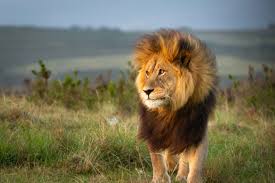Africa’s wilderness is one of the most breathtaking and diverse landscapes on Earth. From the vast savannas of the Serengeti to the dense rainforests of the Congo Basin, the continent is home to an incredible array of ecosystems and wildlife. The African savanna, with its golden grasslands and scattered acacia trees, is perhaps the most iconic image of the continent. It is here that the Great Migration takes place, where millions of wildebeest, zebras, and gazelles traverse the plains in search of fresh grazing grounds, followed closely by predators like lions, cheetahs, and hyenas.
The rainforests of Central Africa, on the other hand, offer a completely different experience. These lush, green jungles are teeming with life, from gorillas and chimpanzees to colorful birds and insects. The Congo Basin, often referred to as the “lungs of Africa,” plays a crucial role in regulating the planet’s climate by absorbing carbon dioxide and producing oxygen.
Africa’s deserts, such as the Sahara and the Namib, are equally fascinating. Despite their harsh conditions, they are home to resilient species like the desert-adapted elephants, oryx, and meerkats. The Namib Desert, with its towering red sand dunes, is one of the oldest deserts in the world and offers a stark, otherworldly beauty.
However, Africa’s wilderness faces significant threats. Habitat loss, poaching, and climate change are putting immense pressure on its ecosystems and wildlife. Conservation efforts, such as anti-poaching initiatives and the establishment of protected areas, are crucial to preserving these natural treasures.
Africa’s wild landscapes are not only a source of wonder but also a reminder of the delicate balance of nature. By protecting these ecosystems, we ensure that future generations can continue to experience the magic of Africa’s wilderness and the incredible biodiversity it supports.
